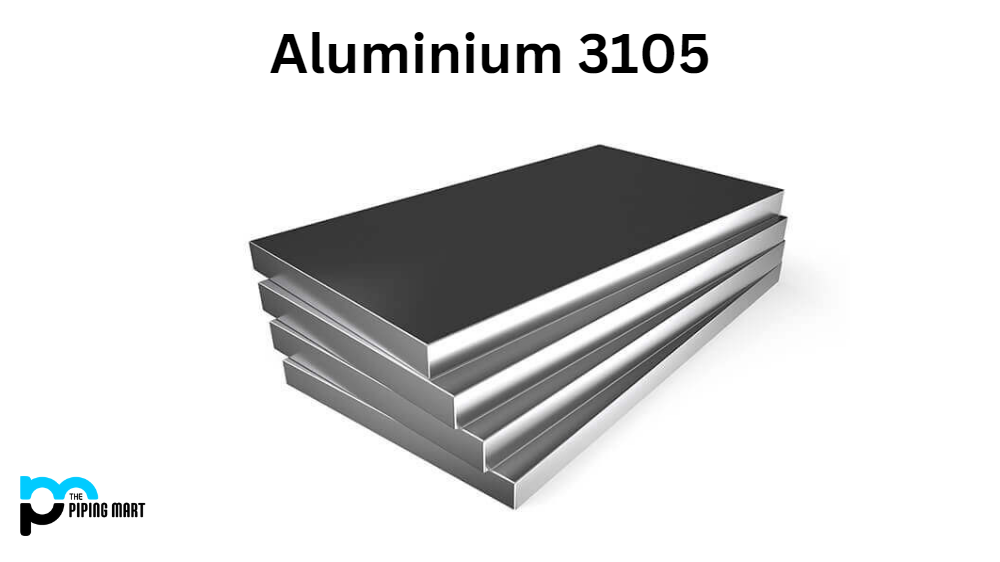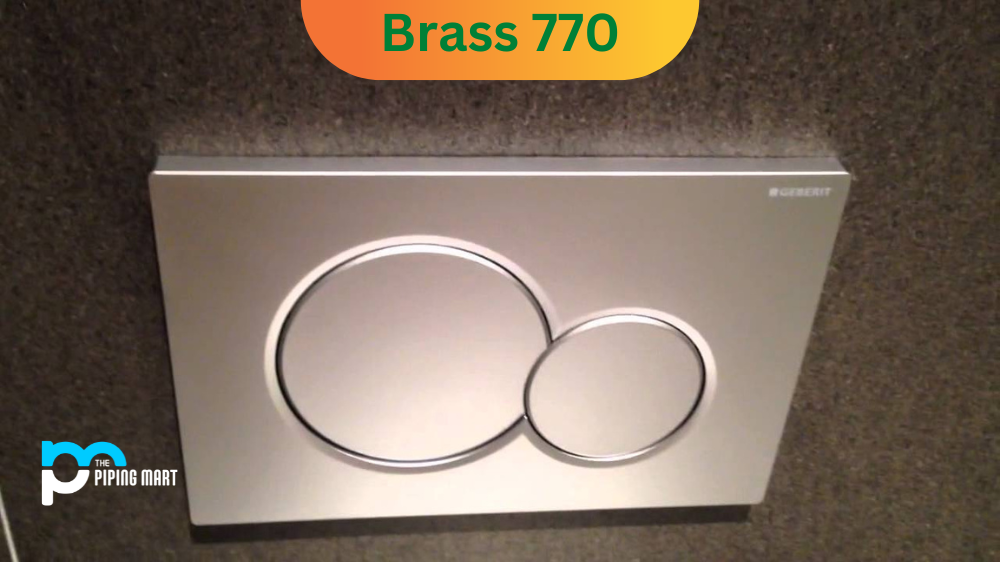Aluminum 3105 is a versatile and widely used alloy with varying properties to meet different needs. Whether you’re interested in its mechanical properties, physical properties, or uses, this blog post will explore the ins and outs of aluminium 3105. Read on for a comprehensive overview of this alloy.
Aluminium 3105 Composition
Aluminum 3105 contains manganese (Mn) as its major alloying element and has a nominal composition of 97.3% aluminium (Al). The rest of the alloy consists of copper (Cu), iron (Fe), silicon (Si), magnesium (Mg), and zinc (Zn).
| Element | Content (%) |
|---|---|
| Aluminium / Aluminum, Al | 99.0 |
| Manganese, Mn | 0.55 |
| Magnesium, Mg | 0.50 |
Mechanical Properties
In terms of mechanical properties, alloy 3105 has an ultimate tensile strength of 30 MPa, a yield strength of 24 MPa, and an elongation at break value of 20%. It also has excellent corrosion resistance compared to other alloys.
| Properties | Metric | Imperial |
|---|---|---|
| Tensile strength | 150 MPa | 21755 psi |
| Yield strength | 130 MPa | 18855 psi |
| Shear strength | 97 MPa | 14069 psi |
| Elastic modulus | 70-80 GPa | 10153-11603 ksi |
| Poisson’s ratio | 0.33 | 0.33 |
| Elongation | 7% | 7% |
Aluminium 3105 Physical Properties
In terms of physical properties, grade 3105 has a density of 2.7 g/cm3 and thermal conductivity values between 100-200 W/mK.
| Properties | Metric | Imperial |
|---|---|---|
| Density | 2.6-2.8 g/cm3 | 0.0939- 0.101 lb/in3 |
| Melting point | 641°C | 1185°F |
Thermal Properties
| Properties | Metric | Imperial |
|---|---|---|
| Thermal conductivity (@25°C/77°F) | 173 W/mK | 1201 BTU in/hr.ft².°F |
Equivalent
ASTM B209
Heat Treatment
This 3105 alloy can also be heat-treated through either solution treatment or ageing processes in order to increase its mechanical properties or improve its corrosion resistance. Solution heat treatment involves heating up the material above 500°C followed by rapid cooling, while ageing includes ageing at temperatures between 200-400°C for several hours or days, depending on the desired result.
Aluminium 3105 Uses, Corrosion Resistance & Heat Resistance
Due to its superior strength and corrosion resistance properties compared to other alloys, aluminum 3105 is often used in applications that require high levels of durability, such as roofing materials, airframes, fuel tanks, hydraulic lines and more. It also offers good heat resistance, making it suitable for use in several industries, including aerospace engineering and automotive manufacturing. Furthermore, due to its superior corrosion-resistant qualities, this alloy is commonly used for outdoor applications such as window frames. It can withstand various weather conditions without rusting or corroding over time. Lastly, due to its low melting temperature, this material is now being considered for use in medical implants such as hip joints requiring high precision when machined or welded into place.
Aluminium 3105 Machining
Aluminum 3105 machining is an impressive process, allowing the shaping and fashioning of metal into intricate and useful products. This technique is highly appreciated for its fast turnaround time, cost efficiency, and exceptional quality. The aluminium 3105 material is easy to work with due to its softness, making it ideal for machining. With the use of automated machinery tools and experienced operators, complex components can be made in no time at all. It also offers great versatility for both simple and very exacting shapes or measurements due to tight margins that can be achieved through precision techniques utilizing powerful machines like CNC lathes and milling centers. Overall, aluminum 3105 machining is a very worthwhile investment when looking to create lasting pieces from one of the most resilient metals on the market today.
Aluminium 3105 Welding
Aluminum 3105 welding is a challenging yet rewarding experience. It involves hard facing and other techniques with the right combination of filler rod to get a high-strength weld. It is especially useful for sealing gas cylinders, joining piping systems in aircraft and automated machine tools. Aluminium welding requires special attention as it has an very low melting point which can be easily overlooked. Achieving successful results with this type of welding requires having a good understanding of the process and the ability to work ‘by the book’ to guarantee satisfactory results each time. With patience and skill, Aluminum 3105 welding can lead to well-formed welds that have excellent strength and corrosion resistance properties.
Conclusion
In conclusion, aluminium 3105 is an extremely versatile alloy offering superior mechanical strength and corrosion resistance compared to other alloys making it a great choice for many applications ranging from aerospace engineering to automotive manufacturing and even medical implants! With excellent heat treatment capabilities plus good machinability and welding abilities, this material is worth considering when looking for resilient enough materials to withstand harsh conditions over long periods of time without losing any structural integrity or performance capabilities! Thanks for reading our overview on aluminum 3105! We hope you found it informative!
Meet Heer, a dynamic and driven writer learning tricks of her trade in the metal industry. With a background in Digital Marketing, Heer brings a unique perspective to her writing, sharing valuable insights. Apart from blogging she like reading and hiking.




